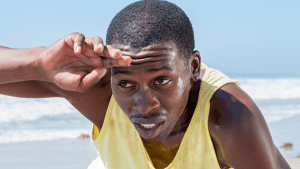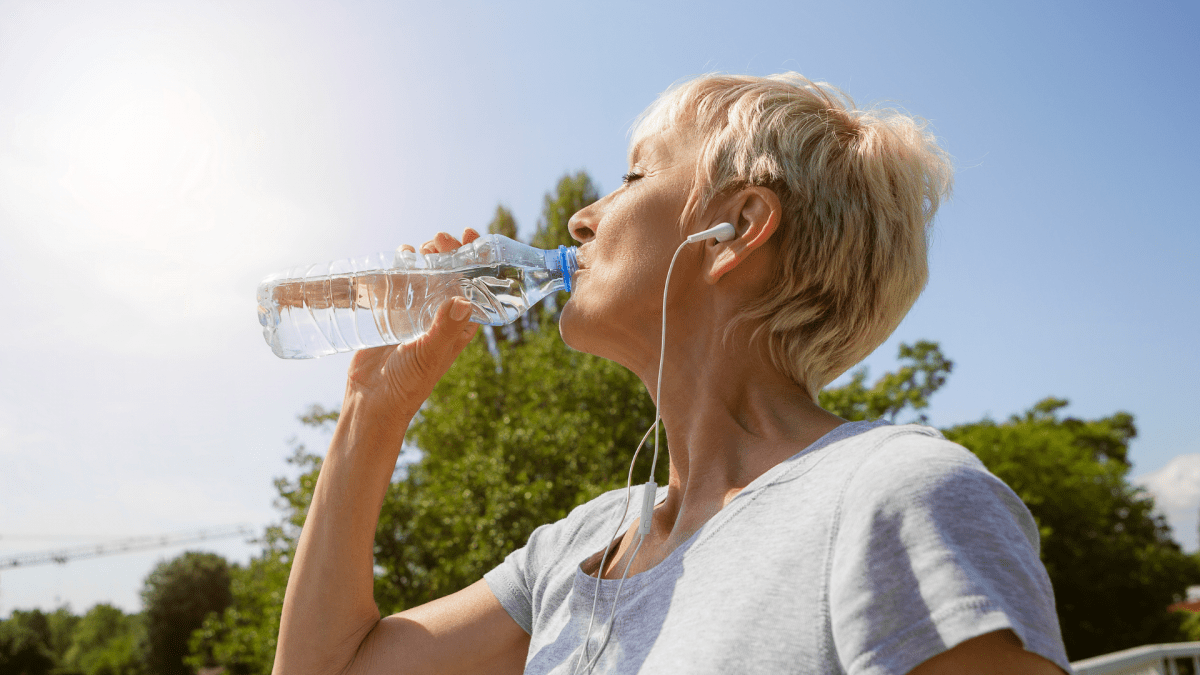The heat is on — both outdoors and in your marathon training schedule. While you may be feeling pressure to push through your runs on those hot days, it’s essential to take care when the temperature rises. Use these commonsense precautions to prevent heat-related illnesses.
How heat affects your body
Exercising in hot weather puts extra stress on your body —and puts you at risk for serious illness. Exercise, combined with air temperature and humidity, can increase your core body temperature.
To help cool itself, your body sends more blood circulating through your skin. This leaves less blood for your muscles, which in turn increases your heart rate. If the humidity is also high, sweat doesn’t readily evaporate from your skin, pushing your body temperature even higher.
Heat-related illnesses
Under normal conditions, your skin, blood vessels and perspiration level adjust to the heat. But these natural cooling systems may fail if you’re exposed to high temperatures and humidity for too long, you sweat heavily and don’t drink enough fluids. The result may be a heat-related illness. Heat-related illnesses occur along a spectrum, starting out mild but worsening if left untreated. They include:
-
-
-
- Heat cramps
Sometimes called “exercise-associated muscle cramps,” heat cramps are painful muscle contractions. Affected muscles may feel firm and may spasm. Your body temperature may be normal. - Heat syncope and exercise-associated collapse
Heat syncope is a feeling of lightheadedness or fainting caused by high temperatures. Exercise-associated collapse is feeling lightheaded or fainting immediately after exercising, especially if you immediately stop running and stand after a race or a long run. - Heat exhaustion
Your body temperature rises as high as 104 F, and you may experience nausea, vomiting, weakness, headache, fainting, sweating, and cold and clammy skin. If left untreated, heat exhaustion can lead to heatstroke. - Heatstroke
This is a life-threatening emergency condition that occurs when your body temperature is greater than 104 F. Your skin may be dry from lack of sweat, or it may be moist. You may develop confusion, irritability, headache, heart rhythm problems, dizziness, fainting, nausea, vomiting, visual problems and fatigue. With heatstroke, you need immediate medical attention to prevent brain damage, organ failure or even death.
- Heat cramps
-
-
 Pay attention to warning signs
Pay attention to warning signs
During hot-weather exercise, watch for signs and symptoms of heat-related illness. If you ignore these symptoms, your condition can worsen, resulting in a medical emergency. They may include:
-
-
- Muscle cramps
- Nausea or vomiting
- Weakness
- Fatigue
- Headache
- Excessive sweating
- Dizziness or lightheadedness
- Confusion
- Irritability
- Low blood pressure
- Increased heart rate
- Vision problems
-
- If you develop any of these symptoms, stop exercising immediately, get out of the heat, hydrate and lower your body temperature. The best way to measure core body temperature is with a rectal thermometer.
If you suspect heat exhaustion, remove extra clothing or sports equipment. Make sure you’re around people who can help you. If possible, fan your body or wet it down with cool water. Placing cool, wet towels or ice packs on your neck, forehead and under your arms, spraying yourself with water from a hose or shower, or sitting in a tub filled with cold water also are effective. Drink fluids such as water or a sports drink. If you don’t feel better in about 20 minutes, seek emergency medical care.
In cases of heatstroke, due to confusion and mental status changes, you won’t be able to treat yourself, and you’ll require emergency medical care.
When to seek medical care
If you have signs of heatstroke, you’ll need immediate medical help. If your core temperature is less than 104 F but doesn’t come down quickly, you’ll also need urgent medical attention. In some cases, you may need fluids through IV tubes if you’re not able to drink or drink enough fluids.
If you’ve had heatstroke, be sure your health care provider clears you to resume exercising. Once your symptoms are gone, you may exercise for short periods of time, gradually increasing the length of time. However, it may take many weeks before you’re able to exercise at a high level.
How to avoid heat-related illnesses
When you exercise in hot weather, keep these precautions in mind:
-
-
- Watch the temperature
Pay attention to weather forecasts and heat alerts. Know what the temperature is expected to be throughout your workout. For running events, “flag” warnings correspond to the degree of heat and humidity. For example, a yellow flag requires careful monitoring, and races are canceled in black flag conditions. - Get acclimated
If you’re used to exercising indoors or in cooler weather, take it easy at first when exercising in the heat. It can take at least one to two weeks to adapt. As your body adjusts to the heat, gradually increase the length and intensity of your workouts. - Know your fitness level
If you’re just getting started, be extra-cautious when working out in the heat. Your body may have a lower tolerance to the heat. Reduce your exercise intensity and take frequent breaks. - Drink plenty of fluids
Dehydration is a key factor in heat illness. Help your body sweat and cool down by staying well-hydrated with water. Don’t wait until you’re thirsty to drink fluids. If you plan to exercise intensely, consider a sports drink instead of water. Sports drinks can replace the sodium, chloride and potassium you lose through sweating. Avoid alcoholic drinks because they can promote fluid loss. - Dress appropriately
Lightweight, loose-fitting clothing helps sweat evaporate and keeps you cooler. Avoid dark colors, which can absorb heat. If possible, wear a light-colored, wide-brimmed hat. - Avoid midday sun
Exercise in the morning or evening, when it’s likely to be cooler. If possible, run in shady areas or consider cross-training with a water workout in a pool. - Wear sunscreen
A sunburn decreases your body’s ability to cool itself and increases the risk of skin cancer. - Have a backup plan
If you’re concerned about the heat or humidity, stay indoors. Work out at the gym, walk laps inside the mall or climb stairs in an air-conditioned building. - Understand your medical risks
Certain medical conditions or medications can increase your risk of a heat-related illness. If you have concerns about running in the heat, talk with your health care provider about precautions.
- Watch the temperature
-
Heat-related illnesses are largely preventable. By taking some basic precautions, your marathon training schedule doesn’t have to be sidelined when the heat is on.





